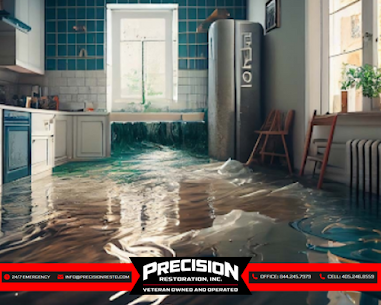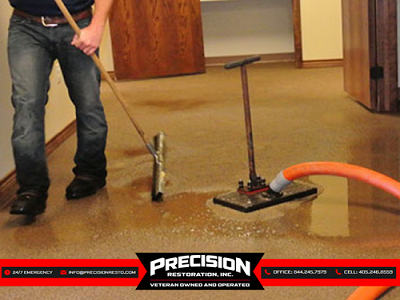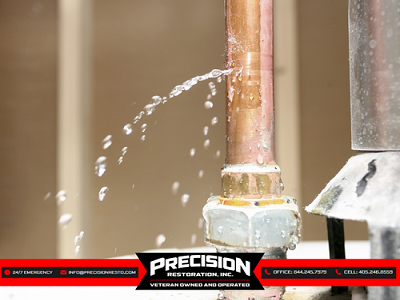Water damage can be a homeowner’s worst nightmare, wreaking havoc on property and possessions alike. Whether it’s from a burst pipe, a leaky roof, or a natural disaster, the aftermath of water damage can be overwhelming. However, fear not, as there’s a step-by-step process to restore your home to its former glory. In this comprehensive guide, we’ll take you through each stage of water damage restoration, from assessment to cleanup, and everything in between. You’ll learn how to assess the extent of the damage, mitigate further harm, and efficiently restore your home to its pre-damaged condition. With the right knowledge and tools, you can tackle water damage head-on and reclaim your space. So, let’s dive in and explore the essential steps needed to navigate the daunting journey of water damage restoration.
Water Extraction Techniques: Removing Water Safely and Efficiently
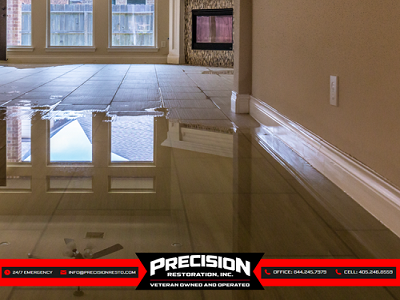
Water extraction is a critical step in the process of restoring a property after water damage. Whether caused by a burst pipe, flooding, or a leaky roof, excess water can wreak havoc on buildings and belongings if not promptly and effectively removed. In this guide, we’ll delve into eight essential water extraction techniques used by professionals to ensure the safe and efficient removal of water from affected areas.
Submersible Pumps: Powerfully Removing Standing Water
Submersible pumps are indispensable tools for swiftly removing large volumes of standing water from flooded areas. These pumps are designed to be fully submerged in water, allowing them to efficiently pump out water without the risk of electrical hazards. They are particularly effective in basements, crawl spaces, and other confined areas where water tends to accumulate.
Truck-Mounted Extractors: High-Powered Water Extraction
Truck-mounted extractors are heavy-duty machines mounted on vehicles, equipped with powerful vacuum systems and large storage tanks. These extractors are capable of extracting vast quantities of water in a short amount of time, making them ideal for large-scale water damage restoration projects. Their mobility allows for quick deployment to various locations, ensuring efficient water removal across expansive areas.
Portable Extractors: Versatile Solutions for Water Removal
Portable extractors are versatile machines equipped with pumps and hoses that can be easily transported to different locations within a property. These extractors are effective for removing water from carpeting, upholstery, and hard-to-reach areas. They come in various sizes and configurations, allowing restoration professionals to tailor their equipment to the specific needs of each job.
Wet Vacuums: Precision Extraction for Small-Scale Cleanup
Wet vacuums, also known as shop vacuums, are handheld or wheeled devices designed for small-scale water extraction tasks. These vacuums are equipped with specialized attachments and filters to effectively remove water from carpets, floors, and other surfaces. They are especially useful for localized spills and minor water damage incidents, providing homeowners with a convenient solution for quick cleanup.
Sump Pumps: Safeguarding Against Basement Flooding
Sump pumps are essential appliances installed in basements and crawl spaces to prevent flooding and water damage. These pumps are typically placed in a sump pit and activated by rising water levels, automatically pumping excess water out of the area to prevent inundation. Regular maintenance and testing are crucial to ensure sump pumps function properly when needed most.
Structural Repairs: Restoring the Integrity of Your Property
Water damage can wreak havoc on the structural integrity of a property, compromising its stability and safety. From weakened foundations to warped floors and deteriorated walls, the structural components of a building can suffer extensive damage when exposed to excess moisture. In this comprehensive guide, we’ll explore eight essential structural repair techniques used by professionals to restore the integrity of properties affected by water damage, ensuring their long-term stability and durability.
Foundation Repair: Strengthening the Building’s Support System
The foundation is the backbone of any structure, providing stability and support for the entire building. Water damage can weaken the foundation, leading to cracks, settlement, and structural instability. Foundation repair techniques such as underpinning, crack injection, and drainage improvements are employed to stabilize and strengthen the foundation, preventing further damage and ensuring the structural integrity of the property.
Structural Drying: Eliminating Moisture from Building Materials
Moisture trapped within structural components such as walls, floors, and ceilings can compromise their integrity and promote mold growth. Structural drying techniques, including the use of air movers, dehumidifiers, and moisture meters, are employed to remove excess moisture from building materials and prevent further deterioration. Thorough drying is essential for preventing structural damage and preserving the long-term stability of the property.
Wood Rot Repair: Addressing Damage to Wooden Structures
Wooden structures such as beams, joists, and framing are susceptible to rot and decay when exposed to prolonged moisture. Wood rot repair techniques involve removing damaged wood, treating affected areas with fungicides, and reinforcing structural elements to restore their strength and stability. Prompt identification and repair of wood rot are essential for preventing further structural damage and ensuring the safety of the building’s occupants.
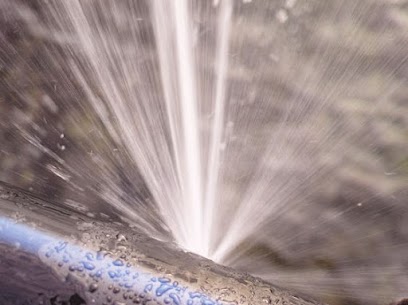
Wall Reinforcement: Repairing Water-Damaged Walls
Water damage can compromise the structural integrity of walls, leading to cracks, bulges, and instability. Wall reinforcement techniques such as crack stitching, wall bracing, and carbon fiber reinforcement are used to repair damage and strengthen weakened walls. These techniques restore the structural integrity of the walls, preventing further deterioration and ensuring the safety of the building.
Floor Leveling: Correcting Uneven or Warped Floors
Water damage can cause floors to become uneven, warped, or sagging, compromising the safety and usability of the space. Floor leveling techniques such as self-leveling compounds, floor jacks, and shimming are employed to correct unevenness and restore the structural integrity of the floors. Properly leveled floors improve the functionality and aesthetics of the space while ensuring the long-term stability of the building.
Cleaning and Sanitizing: Eliminating Contaminants
After water damage strikes, one of the most critical steps in the restoration process is thorough cleaning and sanitizing. Water intrusion can introduce various contaminants into your home or business, posing health risks and causing further damage if left unchecked. In this guide, we’ll highlight key points for effectively eliminating contaminants and restoring a safe, healthy environment.
- Identification of Contaminants: Begin by identifying the types of contaminants present, which may include bacteria, mold, and chemical residues. This assessment guides the selection of appropriate cleaning agents and techniques.
- Personal Protective Equipment (PPE): Ensure that restoration professionals wear appropriate PPE, including gloves, masks, and goggles, to protect against exposure to contaminants during cleaning and sanitizing procedures.
- Removal of Standing Water: Start by removing any standing water using pumps and extractors to prevent further spread of contaminants and minimize the risk of mold growth.
- Cleaning Surfaces and Materials: Thoroughly clean all affected surfaces and materials using EPA-approved disinfectants and antimicrobial solutions. Pay special attention to areas prone to bacterial growth, such as kitchens, bathrooms, and basements.
Effective cleaning and sanitizing are essential steps in the water damage restoration process, helping to eliminate contaminants and restore a safe, healthy environment for occupants.
Conclusion
At Precision Restoration, Inc. in Oklahoma City, Oklahoma, we prioritize efficiency and excellence in every step of the water damage restoration process. From initial assessment to thorough cleanup and restoration, our team is dedicated to providing comprehensive solutions tailored to each client’s needs. With our expertise and commitment to quality, we ensure that properties are swiftly and effectively restored to their pre-damage condition, giving our customers peace of mind and confidence in our services. Trust us for reliable and professional water damage restoration solutions.

